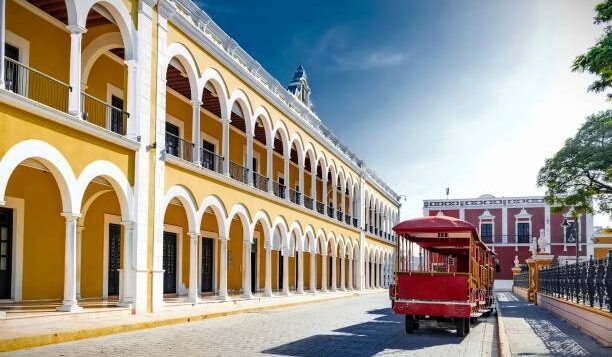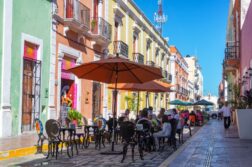The state of Campeche, the third of those that make up the Yucatan Peninsula –together with Yucatan and Quintana Roo–, is one of those places that are capable of surprising anyone. Thanks to its exciting combination of culture and nature, Campeche offers a remarkable set of attractions. Ancient Mayan cities, the inexhaustible charm of its capital city, exquisite cuisine, and beautiful haciendas are just some of its countless possibilities.
Visiting Campeche means you have the chance to discover a territory that still preserves its virgin nature: mangroves, jungle, rivers, lakes, lagoons, estuaries, and so forth. Places such as the Miguel Colorado cenotes or the Calakmul Biosphere Reserve –the largest tropical forest reserve in Mexico– invite you to live all kinds of adventures. Or just relax on one of its gorgeous beaches, such as Isla Arena, Playa Bonita, Sabancuy, Isla Aguada…, and enjoy the great hospitality of the locals.
Campeche is also its history. The state’s incredible archaeological sites, such as Edzna, Calakmul, Becan, Xpuhil, and many others, will take you back in time to discover all the magic of the Mayan World. Moreover, its capital city of San Francisco de Campeche, a place of pirate legends and cobbled streets, is an authentic colonial treasure recognized by UNESCO as a World Heritage Site.
- Edzná
- Hacienda Uayamón
- Campeche, historic city
- Calle 59
- The Malecón
- San Jose and San Miguel forts, the city’s strongholds
- Campeche’s carnival, an explosion of color
- Restaurants in Campeche
- Culture
Nature, art, adventure, history, culture, gastronomy… Get ready to discover Campeche, one of the most beautiful destinations in Mexico!
Edzná, Mayan heritage
There are 16 archaeological sites open to the public throughout the state of Campeche. Each of them is an authentic historic jewel and a vital part of the incredible Mayan heritage that you can discover all over the Yucatan Peninsula. Chichen Itza, Uxmal, Tulum, Coba …, among all of them, Edzna is one of the ancient Mayan cities that you cannot miss.

One of the most relevant centers of political and economic power of the Mayan World between the years 400 and 1200 CE, Edzna is among the most interesting pre-Hispanic cities in Mexico. The archaeological site is composed of a unique collection of temples, palaces, and other quite impressive structures, such as the Great Acropolis and the Building of the Five Floors, the Nohochná (The Big House), the Ball Court, and the Northwest Temple, known as The Old Sorceress, among many others. In addition to its architectural wealth, Edzna is important for its complex hydraulic system, a revolutionary infrastructure that allowed the city to harvest water for human consumption and agricultural use throughout the year.
Hacienda Uayamón, a jewel in the middle of the jungle
Campeche’s past has strong links to its large estates or haciendas, echoes of a time when cattle ranching and agriculture expanded notably throughout the state. Crops such as sugar cane and henequen, or the exploitation of chicle (natural chewing gum) and the famous “palo de Campeche” (logwood tree), made many of these haciendas the center of regional development and, of course, allowed their owners to become extremely rich.
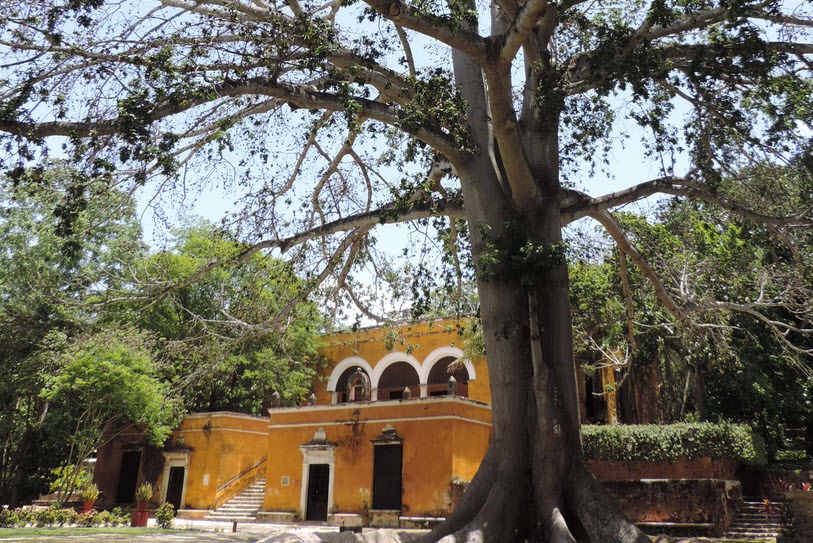
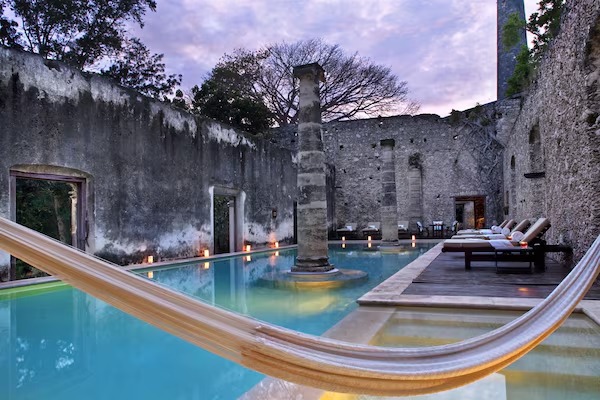
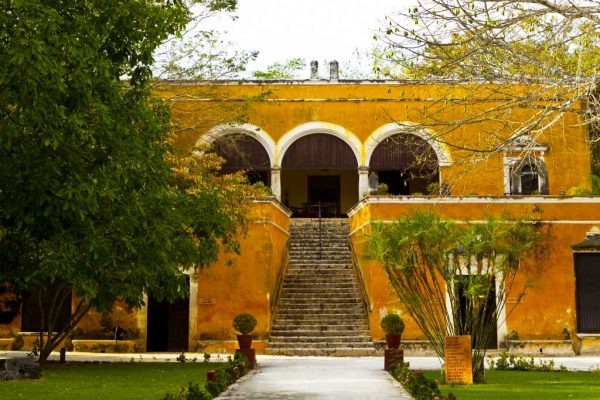
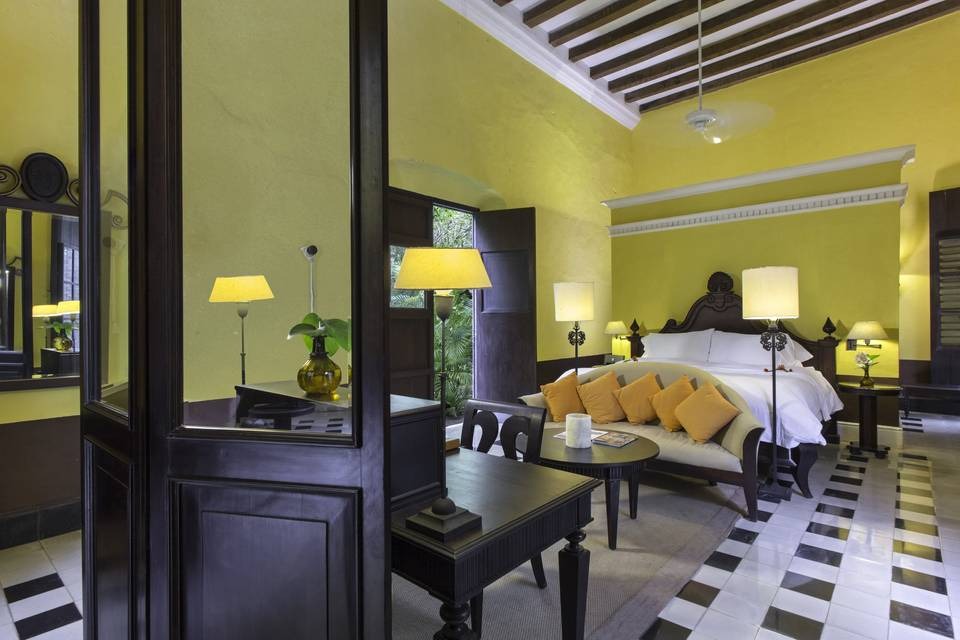
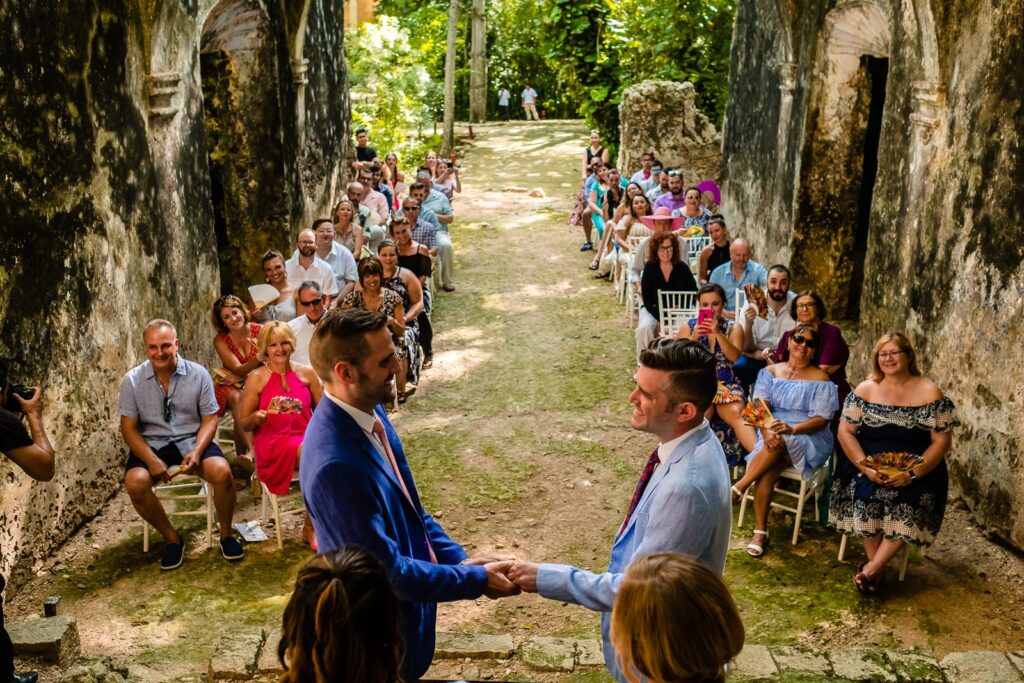
Located about 12 miles from the city of Campeche and built around the year 1700, Hacienda Uayamon is one of the best examples of this unique heritage. Turned into a luxury boutique hotel –like many of the haciendas in the area–, Uayamon still preserves its old buildings, both the elegant residential areas and the workspaces, all of them transformed into the rooms and common areas of the hotel: spa, restaurant, pool, gardens…. And everything surrounded by the dense tropical jungle. A truly magical place!
Campeche, historic city
Founded in 1540 and recognized as a World Heritage Site by UNESCO, San Francisco de Campeche, the state capital, is the only walled city in Mexico and a true historical jewel. Walking through the streets of its historic center, you can contemplate priceless colonial buildings, such as the Cathedral and the former temple of San Jose. Different period mansions converted into beautiful shops, restaurants, galleries, and museums also make the old town a special place. The defensive walls and the bastions that protected the city for centuries are still standing, and they are, of course, one of the main attractions of this historic city.
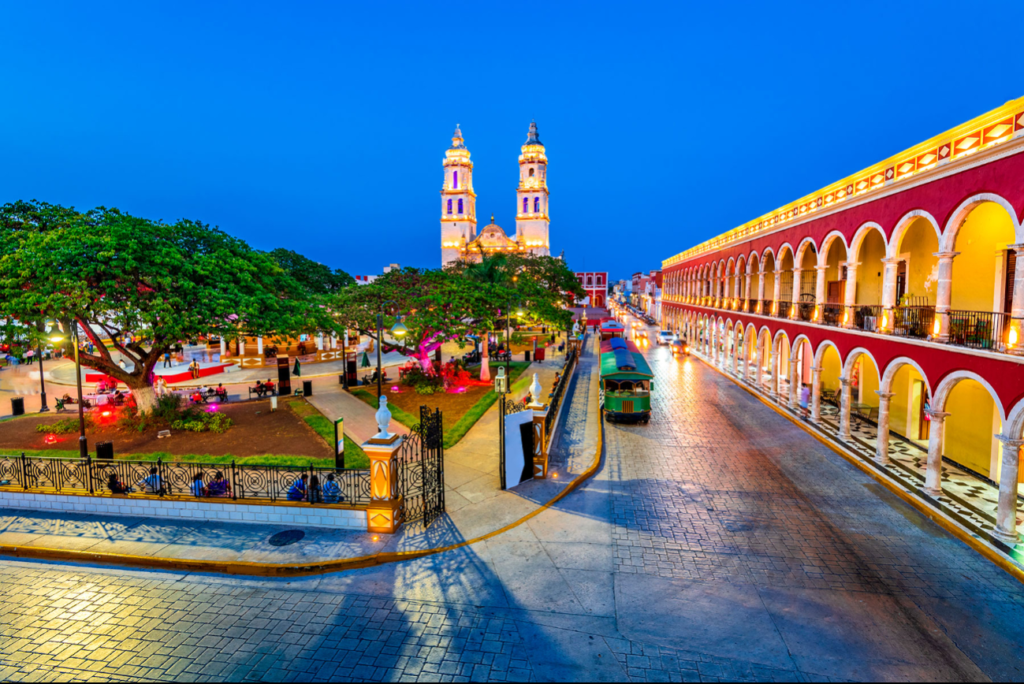
Outside its walls, Campeche also has a lot to offer. Like the forts of San Miguel and San Jose, two strongholds of the city’s defensive system –today converted into exciting museums. Like its beautiful sunsets, that you can enjoy strolling along the Malecon, right on the shore of the Gulf of Mexico. Like the Moch Couoh Park, with its spectacularly lit gardens, trails, lakes, and fountains. Historical or contemporary, the attractions that you can find in the city of Campeche will leave you just speechless.
Calle 59, the heart of the city
Connecting the Puerta de Tierra (Land Gate) with the Puerta de Mar (Sea Gate), the famous 59th Street is the main artery of the historic center of Campeche. Take a stroll down this nice cobbled street and enjoy its traditional architecture; buy a few delicate handicrafts; get a taste of the delightful local cuisine, enjoy the lively nightlife of the city… It is a place that you have to discover!

Places such as the Casa del Teniente del Rey, from the 18th century, the San Francisquito Church, from the 17th century, or Casa San Pablo, an art gallery that promotes the work of local artists, make 59th Street a must-see. Also, do not forget to taste the delicious chaya-flavored water with pineapple, coconut ice cream, or crunchy marquesitas while walking through this beautiful pedestrian street. You are going to love it!
The Malecón of Campeche, joy by the sea
Built on land reclaimed from the sea, this close-to-4-mile-long promenade covers a good part of the city’s coastline. Ideal for a good walk or bike ride, the Malecon has several parks, playgrounds, sports zones, and decorative elements, such as the sculpture “Mayan Angel”, or the colorful name of the city in volumetric letters –a selfie must.

Sunset is, without any doubt, the perfect time to visit Campeche’s Malecon. Watching our bright star plunge into the sea, painting the sky in impossible colors, while the fishing boats return to port and seabirds fly away to look for their night-time roosts, is a breathtaking spectacle that nobody should miss.
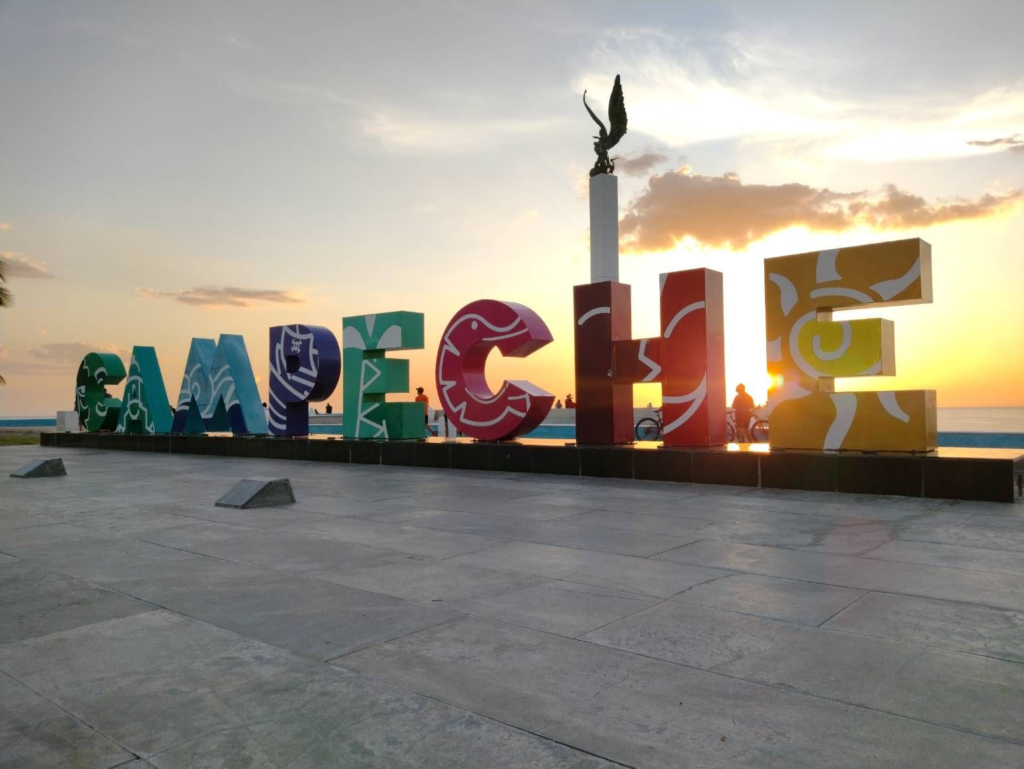
San Jose and San Miguel forts, the city’s strongholds
Since day one, the city of Campeche was threatened by pirates that sailed the Gulf of Mexico and the Caribbean Sea. It was precisely for that reason that the walls, forts, and bastions necessary for its defense got built. Masterpieces of military architecture that still stand, many of them were turned into stunning museums that tell the rich history of the city and state of Campeche.
- Fort of San Jose El Alto.– Built at the end of the 18th century, on a coastline hill located about 2 miles northeast of the walled city, San Jose El Alto is a stronghold without bastions, surrounded by a pit. Among its most particular features is the driveway, drawn in the shape of an elongated “s”, to avoid direct attacks on the drawbridge and the main door. Since December 2017, this fort houses the Museum of Underwater Archeology, a fascinating collection composed of archaeological pieces extracted from both the waters of the Gulf of Mexico and the Caribbean Sea, as well as rivers, lakes, lagoons, springs, streams, cenotes, and other bodies of water of the Yucatan Peninsula.

- Fort of San Miguel.– Like San Jose, but about 1.5 mi. to the southwest, also on a coastal promontory, San Miguel is another of the main buildings that formed the defensive system of Campeche between the XVII and XVIII centuries. Unlike the other, this fort does have two small bastions that defend its door, although they share, architecturally speaking, the moat, the drawbridge, and the curvilinear corridor that blocks direct access to the redoubt. Since 1999, the Fort of San Miguel houses the Archaeological Museum of Campeche, an outstanding facility that includes two unique collections: the jadeite funerary masks from the tombs of the Divine Lords of Calakmul and the funerary figurines from the island of Jaina. Among other significant pieces.

Campeche‘s carnival, an explosion of color
Campeche is all about color, and its carnival is the best proof of it. Considered one of the oldest in Mexico (it is said that it was held for the first time in 1582), this popular fiesta is one of the most picturesque festivals in the country. And, of course, a time when the entire city gets overwhelmed with joy. Like many other carnivals on the Gulf Coast and the Caribbean, the one that takes place in Campeche is also rooted in the Catholic tradition as well as in the rhythms and other cultural elements that came to America with enslaved Africans.

Campeche’s carnival is celebrated every year for a couple of weeks and it invades different parts of the city –from the Malecon to the San Roman neighborhood and the historic center– with several acts and parades. The “Burial of Bad Humor”, the coronations of queens and kings, the parade, costume contests, concerts, and food stalls are just some of the most joyful and fun moments of this fabulous party.
Restaurants in Campeche
Eating in Campeche is a true pleasure! Pickled pampano fish, coconut shrimps, school shark bread, cochinita pibil…, local cuisine is a delicious fusion of the traditional flavors of the Mayan World and those of central Mexico with nuances from the Antilles and Spain. All over the city, you can find all kinds of restaurants that will serve you authentic delicacies.

- La Palapa del Tío Fito.- Another local classic! Located at one end of the Malecon, with beautiful sea views, the place has more than 30 years of experience and has become an ideal place to enjoy the best fish and seafood.
- La Pigua.- A city’s classic serving fish and seafood of the best quality, including the famous coconut shrimps, the ixcatic chili stuffed with dogfish, and the green pampano, among other specialties.
- Marganzo.- At an old colonial-style mansion located on 8th Street (historic center), this traditional restaurant serves meat and typical seafood from the area, from school shark bread to cochinita pibil.
- Chocol ‘Ha.- Right in the middle of 59th Street, this chocolate shop and cafeteria offers you a sweet break –and some salty snacks– to regain strength during your visit to the historic center of the city. 100% local cocoa!
- La María Cocina Peninsular.- Traditional recipes from the Yucatan Peninsula with delicious modern touches, from a green shrimp aguachile with local fruit sorbet to an apple risotto with buttered snook fish.
- La Recova Cincuenta & Nueve.- Also at 59th St., this place offers a broad menu of contemporary cuisine with hints of local and other Mexican flavors, as well as Argentine-style cuts of meat, among other options.

CULTURE
Teatro Francisco de Paula Toro
The Historic Center of Campeche, considered World Heritage since 1999, boasts this cultural site, a cultural icon for its inhabitants.
It is located in a very central location, on 12th Street between 51st and 53rd. At the initiative of the president of the City Council, General Francisco de Paula Toro, supported by enthusiastic citizens, this theater was built under the design of the French architect Teodoro Journot.
Inaugurated in September 1834, it was originally named Coliseum; The works Orestes or Agamemnon Avenged and The Syringe were then presented. Furthermore, in 1899, the Campechano anthem premiered in this venue.
As a permanent tribute to its promoter, since 1879 it has been known as the Francisco de Paula Toro Theater. On its façade there is a sober portico covered with beams and inside, four levels in the shape of a horseshoe. Various events are presented here: plays, concerts, recitals, among others.


